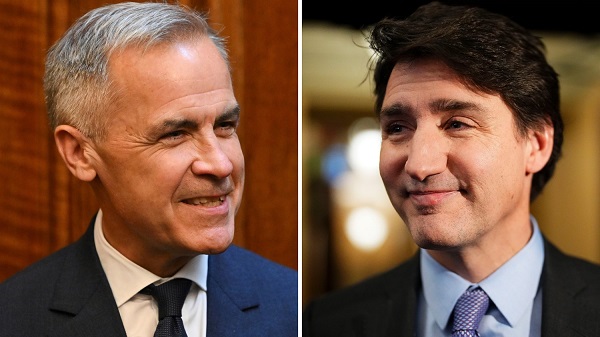Health
Central Alberta family desperate for a miracle… Looking for a hero

This post has been submitted by the mother of a young Central Alberta father. He moved to Calgary years ago to be closer to medical care. His wife grew up in Sylvan Lake and Lacombe. Together they’re raising 2 children and unfortunately their future is uncertain.
From Julie.
You may or may not have seen a desperate plea from a Central Alberta family trying to save a loved one’s life. This is the kind of situation that requires a really large number of people to help out. You never know who’s going to step forward and become someone’s hero. The key is, they have to know about the situation before they can act on it. So.. here’s a bit of information about this
Alex’s Journey
Having a baby is supposed to be a wonderful time in your life. Alex was born looking healthy; however, it all went wrong for him at 22 months of age.
After being rushed by his Father and I by car to our nearby city hospital, Alex was hospitalized for 5 days with a 105 degree fever, which nothing would bring down. Alex was in so much pain, screaming a blood curdling sound that made you think someone was murdering this poor baby slowly.
Once at hospital he was whisked away to try to identify the problem. They told us he was a mess inside and needed to be airlifted to Sick Children’s Hospital. Once there it became a series of surgeries and a lengthy hospital stay. His kidneys were being affected by a blockage he had developed.
By age four he lost one kidney and again needed several hospital visits and surgeries to help save his other kidney. The doctors explained that Alex has Chronic Renal Failure and would eventually need a kidney transplant. At age 8 we almost lost him again due to a potassium overload in his remaining kidney that gradually slowed his heart dangerously. We made another trip to Sick Children’s Hospital to get his levels back down before his heart stopped.
Through all these hardships Alex always remained a tough little guy. Now as a 29-year-old with a loving wife and 2 little ones, the time has come for our son and he is in need of a kidney.
My name is Julie, I am his mother and I have said from the beginning of this journey that I will give my kidney. That being said, it would be wise to have more donors that are willing as well to help him have a greater chance of success. His older brother has also volunteered, so please help us give Alex and his family a happy, healthy life.
Julie (mom)
If you have Blood Type O and this something you could do, our family would be so grateful to have the chance to keep him in our lives and give him the opportunity to watch his children grow up. Anyone can be tested to see if they are a match. You will need Alex’s full name so please visit the Facebook Group we have set up and reach out to our admin/s. https://www.facebook.com/groups/708888052863495/
To Get Tested: 403 944 4635
Health
CDC’s Autism Reversal: Inside the Collapse of a 25‑Year Public Health Narrative

 James Lyons-Weiler, PhD, for Popular Rationalism
James Lyons-Weiler, PhD, for Popular Rationalism
On November 19, 2025, quietly and without ceremony, the U.S. Centers for Disease Control and Prevention updated its website and rewrote one of the most politically charged sentences in modern American medicine. A sentence that had been treated as gospel—“Vaccines Do Not Cause Autism”—was suddenly recast as something far more fragile. In the CDC’s own words, the slogan “is not an evidence‑based statement” because available studies “have not ruled out the possibility that infant vaccines contribute to the development of autism.”
Yet the headline still sits atop the page. Not because the CDC stands behind it, but because a U.S. Senator demanded it stay. CDC states plainly that the headline remains only due to an agreement with the chair of the Senate HELP Committee. A mandated political slogan now presides over a scientific reversal.
The body of the page reads like a confession. It acknowledges that key infant vaccines—including HepB, DTaP, Hib, PCV13, IPV, rotavirus, and influenza—have never been studied for autism outcomes. It admits that earlier studies used to justify the categorical claim were incapable of ruling out causation. It concedes that mechanistic and associative findings were ignored by health authorities. And it promises, for the first time, an HHS‑led effort to conduct “gold‑standard science” to evaluate whether early‑life vaccination can contribute to autism.
This moment did not arise in a vacuum. It is the final surface rupture of a 25‑year fault line running beneath CDC’s public messaging—a story of suppressed signals, discarded testimony, unpublished findings, internal dissent, FOIA‑released emails, whistleblower documents, and a lawsuit that forced CDC to walk back its own claim once before
The Early Warnings CDC Never Told the Public
In July 1999, the American Academy of Pediatrics and the U.S. Public Health Service issued a joint public statement urging the reduction or elimination of thimerosal in childhood vaccines. The stated reason was “an abundance of caution.” But in internal memos from FDA scientists revealed something more urgent: infants receiving vaccines according to the CDC schedule were exposed to mercury levels far exceeding EPA safety limits.
Behind the scenes, the alarm was palpable; in public, the message was reassurance.
One year later, in June 2000, CDC convened a closed‑door meeting at the Simpsonwood Retreat Center near Atlanta. The meeting brought together CDC officials, vaccine company representatives, and outside consultants to review early analyses from the Vaccine Safety Datalink (VSD). The transcript—obtained via Safeminds by FOIA—shows CDC epidemiologist Thomas Verstraeten presenting a dose‑dependent association between thimerosal exposure and neurodevelopmental disorders, with findings concerning enough that multiple attendees warned of “what this will mean” if made public.
In the months that followed, internal CDC emails—eventually released through persistent FOIA litigation—show Verstraeten repeating the same refrain: “It just won’t go away.” The association persisted despite multiple rounds of analytical restructuring.
But as the signal persisted, the public narrative hardened: vaccines are safe, and no link to autism exists.
2001: The IOM Frames the Outcome Before Reviewing the Evidence
In January 2001, the Institute of Medicine’s Immunization Safety Review Committee met to determine how it would approach vaccines‑and‑autism questions. The committee made two decisions that shaped every subsequent conclusion.
First, the IOM reported they would not review experimental animal data or mechanistic toxicology because the committee did not have “a free weekend” to do so.
Second, as revealed in the same transcript, the chair, Harvard pediatrician Marie McCormick, stated that CDC “wants us to declare” vaccines safe and that the committee was “not ever going to come down that autism is a true side effect.”
Study director Kathleen Stratton added that the predetermined outcome—“inadequate to accept or reject”—was the result “Walt wants,” referring to Walter Orenstein, then head of CDC’s National Immunization Program.
These statements were later entered into the Congressional Record.
The outcome—before any evidence was evaluated—was set.
The Verstraeten Disappearance
In 2002, before CDC’s thimerosal paper was published in Pediatrics, lead author Thomas Verstraeten left CDC to work for GlaxoSmithKline (GSK), a company producing thimerosal‑containing vaccines. The conflict was not disclosed in the paper.
2004: How Testimony and Mechanisms Were Removed
The IOM’s 2004 report on vaccines and autism excluded parental accounts of regression, mechanistic submissions detailing neuroimmune pathways, autism evidence involving vaccines other than the measles, mumps and rubella (MMR) vaccine and the growing literature on thimerosal‑related neurotoxicity.
Although the committee acknowledged that vaccines might trigger autism in a small biologically susceptible subset, it declared such a possibility insufficient to justify further research. It was the line CDC and AAP repeated for years.
At the same moment, statistician C.P. Farrington issued a methodological warning about the self‑controlled case series (SCCS) method—central to CDC’s MMR studies—explaining that SCCS can mask population‑level effects. This concern fell on deaf ears.
2007–2008: The Poling Precedent
In the Hannah Poling case, the federal government formally conceded via NVICP summaries that vaccines triggered a mitochondrial encephalopathy that manifested as autism.
This was the government’s first—and still one of its only—acknowledgments that vaccine‑induced autism can occur in a susceptible individual.
2014: The Whistleblower
CDC senior scientist Dr. William Thompson released a statement admitting that statistically significant findings related to MMR timing, race, and autism were omitted from a 2004 CDC study. His statement is preserved in the webarchive.
In 2015, Congressman Bill Posey read Thompson’s documents into the Congressional Record. In that same year, the groundbreaking documentary VAXXED reviewed the manipulation and destruction of data by CDC employees to bury the strong association of on-time MMR vaccination
2017: HHS Admits It Never Performed Required Vaccine Safety Reviews
Under pressure from a sweeping FOIA request, HHS disclosed that it had not performed the periodic vaccine safety reviews required under the 1986 National Childhood Vaccine Injury.
2017–2023: Aluminum, Microglia, and the Rewriting of Neuroimmunology
A growing scientific literature revealed significant concerns that aluminum in vaccines may play a increasing role: aluminum brain retention, macrophagic myofasciitis, dose‑dependent aluminum toxicity and toxicokinetic and clearance concerns.
Simultaneously, in a landmark review, the HHS Inspector General confirmed extraordinary underreporting in the Vaccine Adverse Events Reporting System.
These findings undermined the assumption that injected aluminum rapidly clears the body.
2018–2024: Maternal Immune Activation (MIA), IL‑6, and Autism Biology
Research on maternal immune activation reshaped autism biology indicates a direct role IL‑6–driven microglial priming, microglial dysregulation and pruning deficits, and immune‑activation neurodevelopmental changes.
These pathways perfectly match parental reports of regression following immune triggers, including fever and vaccination.
The 2018 IPAK Systematic Review
A systematic analysis by the Institute for Pure and Applied Knowledge (IPAK) examined 48 studies used by CDC and AAP to support the “vaccines do not cause autism” claim. The full report found that the key studies sent to President Trump in his first term, the average study quality score was –6.61 (on a scale where +12 represents a robust design); only one study scored above zero; most did not measure autism prevalence; none compared vaccinated vs. never‑vaccinated children; nearly all were retrospective correlation studies, unable to test causation. many were underpowered, overadjusted, or structurally incapable of detecting subgroups; and that studies showing associations were absent from CDC’s curated lists.
The Lawsuit That Forced CDC’s First Retraction
In the late 2010s, the Informed Consent Action Network (ICAN), led by Del Bigtree, filed a Data Quality Act challenge demanding CDC produce evidence that all vaccines on the infant schedule do not cause autism. CDC could not produce such evidence. The slogan was removed.
Under court order, the slogan was reinstated—until CDC’s 2025 update disavowed it again although the header remains as a purely political concession.
CDC’s 2025 Admission: The Narrative Has Collapsed
CDC now acknowledges that many infant vaccines have never been studied for autism. The website correctly reports that observational studies used to date cannot rule out causation. It also reports that mechanistic pathways were not evaluated. Most importantly, it reports that evidence showing association was ignored or suppressed.
The header, “Vaccines Do Not Cause Autism”, sticks out like a sore thumb, a\ reminder that it exists only because a U.S. Senator demanded it stay.
This is more than scientific refinement; it is a reckoning.
What Gold‑Standard Science Would Actually Require
A real determination about vaccines and autism would require a mix of retrospective prospective cohorts with fully unvaccinated controls. Genetic susceptibility profiling would be tracked with vaccine exposure and machine learning prediction modeling used to study exactly which risk factors could have predicted who would have developed autism. The prediction models optimized retrospectively would be to test prospectively and autism rates compared in kids removed from the vaccine schedule via clinical risk prediction.
Parents as Witnesses
For decades, parents have described regression events following vaccination—loss of language, eye contact, sociability, and developmental progress. CDC now admits these observations have never been properly studied.
These accounts are no longer anomalies—they align with known pathways of neuroimmune disruption.
Conclusion
CDC’s 2025 update is not a scientific conclusion. It is a confession of malfeasance by an organization whose entire paradigm on vaccine risk has not risk management, but rather, risk perception manipulation.
The question was never settled in spite of sufficient evidence that the correct studies are warranted.
“Gold‑standard science” is coming—twenty‑five years late. CDC is not changing its language because new evidence emerged. It is changing its language because the evidence it once relied upon was never sufficient to justify the claim.
Popular Rationalism is a reader-supported publication.
To receive new posts and support my work, consider becoming a free or paid subscriber.
Health
BREAKING: CDC quietly rewrites its vaccine–autism guidance

In a stunning shift, the CDC now says its own “vaccines don’t cause autism” claim was not evidence-based.
For the first time in a generation, the US Centres for Disease Control and Prevention (CDC) has rewritten its official position on whether vaccines can cause autism.
This is a change that could reshape one of the most politically charged and emotionally fraught debates in modern medicine.
In a website update published on 19 November 2025, the agency now states that the long-standing claim “vaccines do not cause autism” is “not an evidence-based claim” because scientific studies “have not ruled out the possibility that infant vaccines cause autism.”
The page also acknowledges that “studies supporting a link have been ignored by health authorities.”
It’s difficult to overstate the significance of these statements. For nearly two decades, they would have been unthinkable for a federal public health agency.
The timing is equally striking.
The change arrives at a moment when the political and scientific landscape around vaccine safety is undergoing a marked shift inside the Trump–Kennedy administration.
For months, critics have accused Health Secretary Robert F. Kennedy Jr and several of the administration’s appointees of holding unconventional views on vaccine safety.
The CDC’s revised language now places the agency closer to Kennedy’s long-standing argument that federal agencies had ignored crucial evidence.
The CDC explains the shift by pointing to the Data Quality Act, which requires federal communications to accurately reflect the evidence.
Because studies have not excluded the possibility that infant vaccines could contribute to autism, the agency concedes that its long-standing categorical statement was not scientifically justified.
The update states plainly that scientific uncertainty remains, particularly for vaccines administered in the first year of life.
Scientific uncertainty finally acknowledged
The information on the website draws a sharp distinction between the infant vaccine schedule — which includes DTaP, HepB, Hib, IPV, PCV and others — and the measles–mumps–rubella (MMR) vaccine.
For the MMR, the CDC continues to cite observational evidence showing “no association … with autism spectrum disorders,” describing the conclusion as supported by “high strength of evidence.”
But the agency also acknowledges that these studies had “serious methodological limitations” and were all retrospective epidemiological analyses, the type that cannot establish cause and effect or identify subgroups who may be more vulnerable.
The acknowledgement of limitations is unusually candid for a federal agency discussing vaccines and autism.
For the infant vaccine schedule, the shift is even more dramatic.
The CDC cites a series of authoritative reviews — including the 1991 and 2012 Institute of Medicine’s assessments, and the Agency for Healthcare Research and Quality’s review in 2021 — all concluding that the evidence was “inadequate to accept or reject” a causal relationship between early-life vaccines and autism.
In other words, the fundamental scientific question remains unresolved.
Political dynamite
The political context makes this change even more consequential. Senator Bill Cassidy, who chairs the Senate Health Committee, has been one of the most vocal critics of Kennedy’s vaccine views.
Cassidy has repeatedly insisted that the science on autism and vaccination was settled years ago. Now the CDC states that the claim “vaccines do not cause autism” does not meet evidence standards.
Remarkably, the CDC states that the headline phrase remains on the page only “due to an agreement with the chair of the U.S. Senate Health, Education, Labor, and Pensions Committee.”
The implication — that the wording is a political compromise rather than a scientific one — will undoubtedly invite scrutiny on Capitol Hill.
Attorney Aaron Siri, who has spent years litigating against federal agencies for greater transparency around vaccine safety, said the update marks a long overdue shift in honesty from the CDC.
“It is an excellent step in the right direction for CDC to start telling the truth to the public about its past misdeeds and misrepresentations,” said Siri.
“Telling the truth and apologizing for its prior misrepresentations is the only way the CDC will ever rebuild trust with the public,” he added.
How the Wakefield saga shaped debate
For years, any attempt to revisit the vaccine–autism question was coloured by the fallout from the “Wakefield saga.”
The retracted 1998 Lancet paper became a shorthand for misinformation, and it allowed public health agencies to dismiss all subsequent concerns as if they were simply a continuation of that controversy.
The episode became a kind of cultural firewall.
Invoking Wakefield was an easy way to shut down inquiry, even when parents were describing patterns that had nothing to do with the MMR vaccine and everything to do with the expanding infant schedule.
The CDC’s admission that the evidence for early-life vaccines is “inadequate to accept or reject” a causal link — and that some studies “supporting a link have been ignored” — breaks the long-standing habit of waving away legitimate questions by pointing back to a decades-old scandal.
A broad recalibration
The CDC’s shift also aligns with a broader recalibration underway across federal health agencies in the US.
The Trump administration has ordered new NIH reviews of vaccine safety science, reinstated the Task Force on Safer Childhood Vaccines, and rejuvenated the CDC’s Advisory Committee on Immunization Practices (ACIP).
The pattern is unmistakable: agencies that once treated certain questions as “settled science” are now reopening them and its impact is likely to reverberate across the globe.
The CDC now admits the science has not ruled out potential links for vaccines given in infancy.
The website also notes that “about one in two surveyed parents of children with autism” believe vaccination played a role, often pointing to shots given in the first months of life or around the one-year mark.
Until now, those parents were often told their concerns were baseless. The agency’s new wording fundamentally alters that dynamic.
Changing the conversation
In the US at least, public health agencies will no longer be able to respond to parental concerns with blanket denials.
Moreover, researchers studying plausible mechanisms — such as aluminium adjuvants, neuroinflammation, mitochondrial vulnerabilities and immune activation — will find themselves in an environment that formally recognises these questions as scientifically legitimate.
Informed consent practices may need to be revisited as the existence of uncertainty is formally acknowledged.
And lawmakers who insisted that the science was settled will now face uncomfortable questions about why federal agencies relied on definitive messaging that did not meet evidence standards.
To be clear — the CDC’s update does NOT assert that vaccines cause autism. What it does say — with clarity the agency has avoided for years — is that the available evidence has not established that they do not, at least for the vaccines given in early infancy.
That distinction may seem subtle, but it represents a profound shift in how the conversation is framed and will undoubtedly impact the personal experiences of families raising autistic children.
For the first time that I can remember, the question of vaccines and autism is no longer treated as taboo. It has been recast — at the CDC’s own hand — as a research question that demands proper investigation.
The shift may prove to be one of the most consequential public health developments of the decade, and it suggests that something significant is moving behind the scenes in the federal agencies that once seemed immovable.
OLD CDC WEBSITE:
UPDATED CDC WEBSITE:
Your paid subscription is what sustains my work.
Please upgrade your subscription to ensure independent investigations continue.
-

 Daily Caller2 days ago
Daily Caller2 days agoDemocrats Explicitly Tell Spy Agencies, Military To Disobey Trump
-

 Alberta1 day ago
Alberta1 day agoAlberta on right path to better health care
-

 Crime1 day ago
Crime1 day ago‘Modern-Day Escobar’: U.S. Says Former Canadian Olympian Ran Cocaine Pipeline with Cartel Protection and a Corrupt Toronto Lawyer
-

 Business2 days ago
Business2 days agoClimate Climbdown: Sacrificing the Canadian Economy for Net-Zero Goals Others Are Abandoning
-

 Great Reset2 days ago
Great Reset2 days agoAre climate-obsessed elites losing their grip over global politics?
-

 Business14 hours ago
Business14 hours agoCanada is failing dismally at our climate goals. We’re also ruining our economy.
-

 Daily Caller2 days ago
Daily Caller2 days agoALAN DERSHOWITZ: Can Trump Legally Send Troops Into Our Cities? The Answer Is ‘Wishy-Washy’
-

 Alberta1 day ago
Alberta1 day agoAlberta Emergency Alert test – Wednesday at 1:55 PM

















